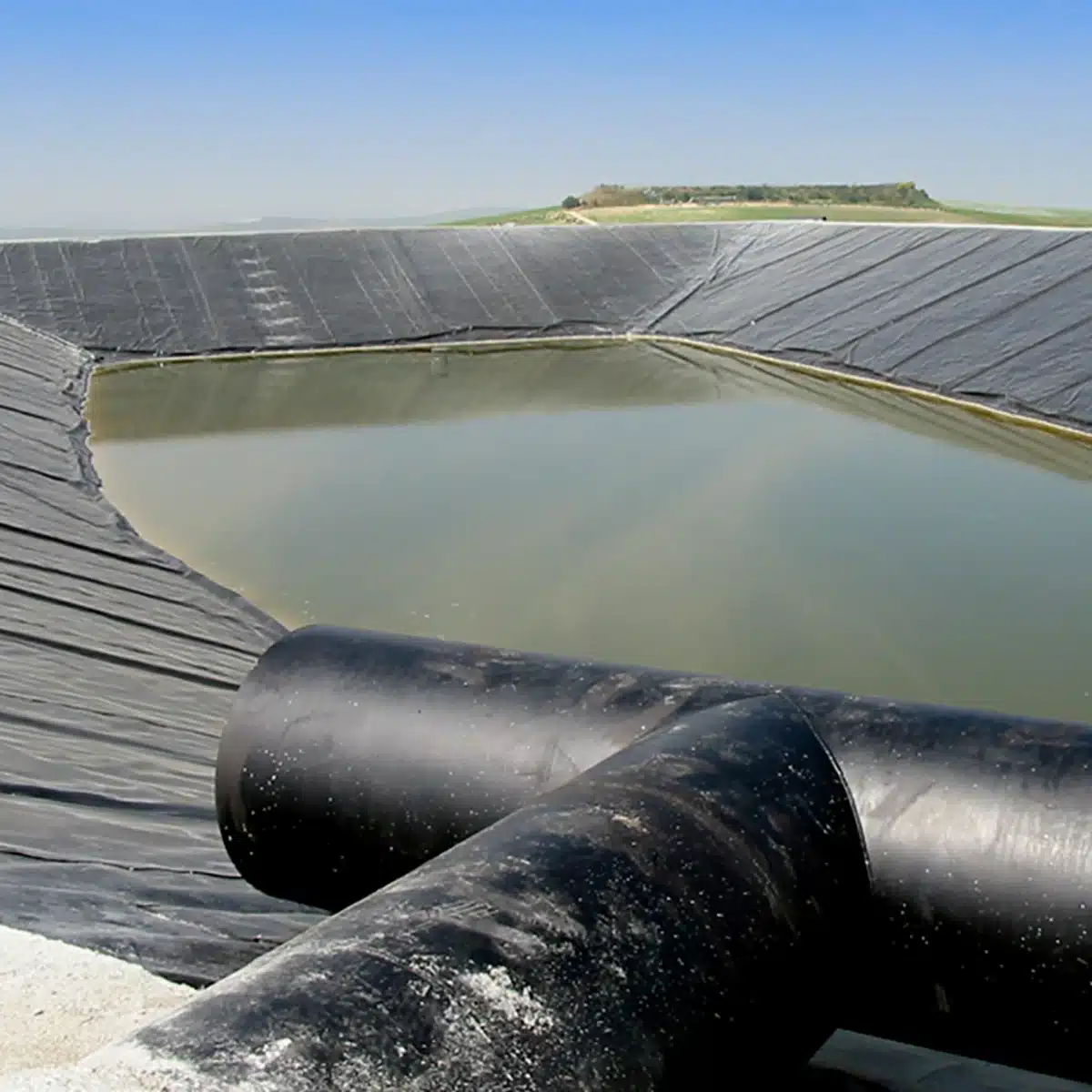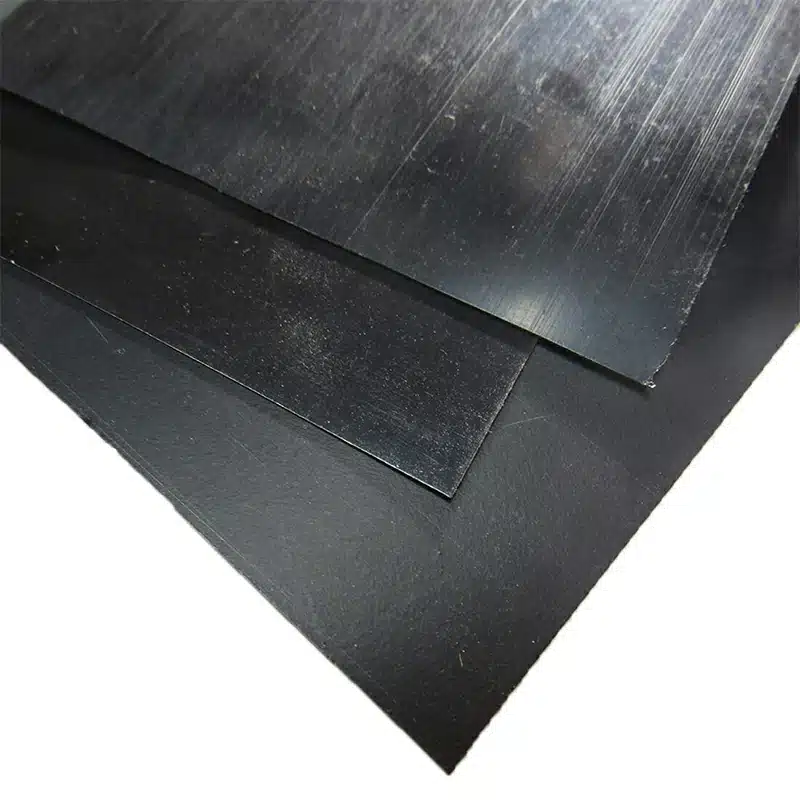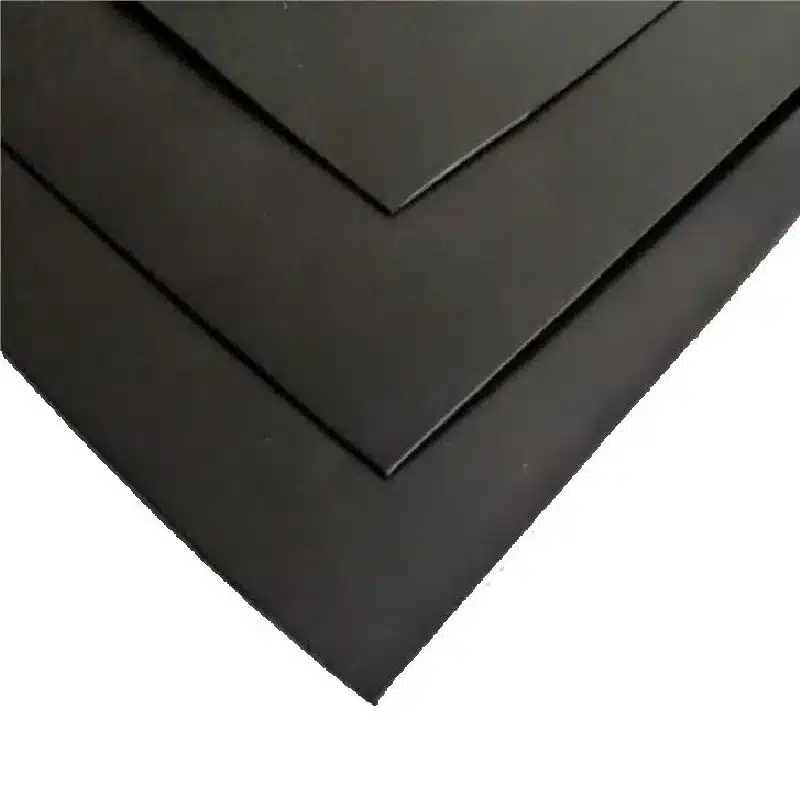+86-159 9860 6917
info@geofantex.com
geofantex@gmail.com
+86-400-8266163-44899
Geomembranes play a pivotal role in various engineering and environmental applications, offering impermeable barriers against liquids and gases. But what exactly determines their thickness, and how does it impact their functionality? In this article, we delve into the intricacies of geomembranes, exploring their thickness, raw materials, distinctions from geotextiles, applications, and significance in modern engineering.
What is the thickness of the geomembrane?
Geomembrane thickness varies based on the specific application and desired performance, spanning a range from 0.5 millimeters to 3.0 millimeters. The selection of thickness depends on factors such as the type of containment, environmental conditions, and the required level of impermeability. Thicker geomembranes are often favored in applications requiring higher levels of durability and resistance to punctures or chemical exposure, ensuring reliable performance over the long term.

What is the raw material for the geomembrane?
Geomembranes are manufactured using a variety of raw materials, with the most common being polymer resins such as polyethylene (HDPE, LDPE, and LLDPE), polypropylene, PVC (polyvinyl chloride), and EPDM (ethylene propylene diene terpolymer). Each material offers distinct properties such as flexibility, chemical resistance, and UV stability. The choice of raw material depends on the specific requirements of the project, including environmental factors, longevity, and cost-effectiveness.
What is the difference between geotextile and geomembrane?
Geotextiles and geomembranes serve different purposes despite often being used together in geotechnical applications. Geotextile is a fiber cloth primarily used for filtration, drainage, separation, and reinforcement. It allows water to pass through while preventing the mixing of soil layers. Geomembrane, on the other hand, is a plastic film designed as an impermeable liners to contain liquids and gases. It provides a barrier against seepage, contamination, and leakage, ensuring environmental protection and structural integrity.
What are geomembranes used for?
Geomembranes find extensive use across various industries and applications. They are commonly employed in environmental protection projects such as landfill liners, wastewater treatment ponds, and mining containment facilities to prevent the migration of contaminants into the soil and groundwater, to stabilize earth and to secure landfills ensuring containment of hazardous or municipal wastes and their leachates. Additionally, geomembranes are used in civil engineering projects for water containment in reservoirs, canals, and irrigation systems. Their impermeable properties make them invaluable in mitigating environmental risks and ensuring sustainable infrastructure development.
The thickness of geomembranes varies depending on the application requirements, with thicker liners offering enhanced durability and resistance. These membranes are manufactured from a range of raw materials, each with unique properties suited for different environmental conditions. Geomembranes serve as impermeable barriers, distinct from geotextiles, and find widespread use in environmental protection and civil engineering projects, contributing to sustainable development and infrastructure resilience. Understanding the intricacies of geomembranes is crucial for ensuring effective containment solutions and mitigating environmental risks.



Get Free Sample
We’ll respond as soon as possible(within 12 hours)






















